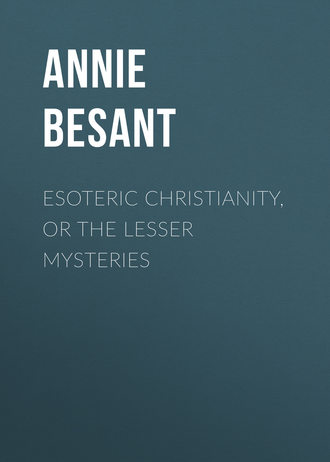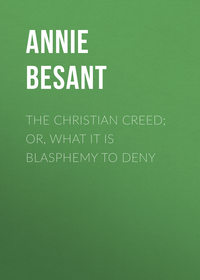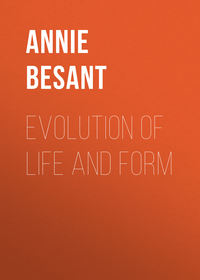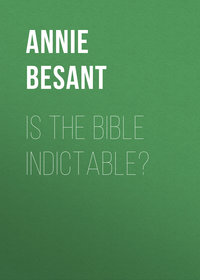 полная версия
полная версияEsoteric Christianity, or The Lesser Mysteries
After endeavouring to show that the "Lord" was more powerful than the other superintending Spirits of the different quarters of the earth, and that he sent his people forth to be punished by living under the dominion of the other powers, and afterwards reclaimed them with all of the less favoured nations who could be drawn in, Origen concludes by saying: "As we have previously observed, these remarks are to be understood as being made by us with a concealed meaning, by way of pointing out the mistakes of those who assert …"137 as did Celsus.
After remarking that "the object of Christianity is that we should become wise,"138 Origen proceeds: "If you come to the books written after the time of Jesus, you will find that those multitudes of believers who hear the parables are, as it were, 'without,' and worthy only of exoteric doctrines, while the disciples learn in private the explanation of the parables. For, privately, to His own disciples did Jesus open up all things, esteeming above the multitudes those who desired to know His wisdom. And He promises to those who believe on Him to send them wise men and scribes… And Paul also in the catalogue of 'Charismata' bestowed by God, placed first 'the Word of wisdom,' and second, as being inferior to it, 'the word of knowledge,' but third, and lower down, 'faith.' And because he regarded 'the Word' as higher than miraculous powers, he for that reason places 'workings of miracles' and 'gifts of healings' in a lower place than gifts of the Word."139
The Gospel truly helped the ignorant, "but it is no hindrance to the knowledge of God, but an assistance, to have been educated, and to have studied the best opinions, and to be wise."140 As for the unintelligent, "I endeavour to improve such also to the best of my ability, although I would not desire to build up the Christian community out of such materials. For I seek in preference those who are more clever and acute, because they are able to comprehend the meaning of the hard sayings."141 Here we have plainly stated the ancient Christian idea, entirely at one with the considerations submitted in Chapter I. of this book. There is room for the ignorant in Christianity, but it is not intended only for them, and has deep teachings for the "clever and acute."
It is for these that he takes much pains to show that the Jewish and Christian Scriptures have hidden meanings, veiled under stories the outer meaning of which repels them as absurd, alluding to the serpent and the tree of life, and "the other statements which follow, which might of themselves lead a candid reader to see that all these things had, not inappropriately, an allegorical meaning."142 Many chapters are devoted to these allegorical and mystical meanings, hidden beneath the words of the Old and New Testaments, and he alleges that Moses, like the Egyptians, gave histories with concealed meanings.143 "He who deals candidly with histories" – this is Origen's general canon of interpretation – "and would wish to keep himself also from being imposed on by them, will exercise his judgment as to what statements he will give his assent to, and what he will accept figuratively, seeking to discover the meaning of the authors of such inventions, and from what statements he will withhold his beliefs, as having been written for the gratification of certain individuals. And we have said this by way of anticipation respecting the whole history related in the Gospels concerning Jesus."144 A great part of his Fourth Book is taken up with illustrations of the mystical explanations of the Scripture stories, and anyone who wishes to pursue the subject can read through it.
In the De Principiis, Origen gives it as the received teaching of the Church "that the Scriptures were written by the Spirit of God, and have a meaning, not only such as is apparent at first sight, but also another, which escapes the notice of most. For those [words] which are written are the forms of certain Mysteries, and the images of divine things. Respecting which there is one opinion throughout the whole Church, that the whole law is indeed spiritual; but that the spiritual meaning which the law conveys is not known to all, but to those only on whom the grace of the Holy Spirit is bestowed in the word of wisdom and knowledge."145 Those who remember what has already been quoted will see in the "Word of wisdom" and "the word of knowledge" the two typical mystical instructions, the spiritual and the intellectual.
In the Fourth Book of De Principiis, Origen explains at length his views on the interpretation of Scripture. It has a "body," which is the "common and historical sense"; a "soul," a figurative meaning to be discovered by the exercise of the intellect; and a "spirit," an inner and divine sense, to be known only by those who have "the mind of Christ." He considers that incongruous and impossible things are introduced into the history to arouse an intelligent reader, and compel him to search for a deeper explanation, while simple people would read on without appreciating the difficulties.146
Cardinal Newman, in his Arians of the Fourth Century, has some interesting remarks on the Disciplina Arcani, but, with the deeply-rooted ingrained scepticism of the nineteenth century, he cannot believe to the full in the "riches of the glory of the Mystery," or probably never for a moment conceived the possibility of the existence of such splendid realities. Yet he was a believer in Jesus, and the words of the promise of Jesus were clear and definite: "I will not leave you comfortless; I will come to you. Yet a little while, and the world seeth me no more; but ye see me: because I live, ye shall live also. At that day ye shall know that I am in my Father, and ye in me, and I in you."147 The promise was amply redeemed, for He came to them and taught them in His Mysteries; therein they saw Him, though the world saw Him no more, and they knew the Christ as in them, and their life as Christ's.
Cardinal Newman recognises a secret tradition, handed down from the Apostles, but he considers that it consisted of Christian doctrines, later divulged, forgetting that those who were told that they were not yet fit to receive it were not heathen, nor even catechumens under instruction, but full communicating members of the Christian Church. Thus he states that this secret tradition was later "authoritatively divulged and perpetuated in the form of symbols," and was embodied "in the creeds of the early Councils."148 But as the doctrines in the creeds are to be found clearly stated in the Gospels and Epistles, this position is wholly untenable, all these having been already divulged to the world at large; and in all of them the members of the Church were certainly thoroughly instructed. The repeated statements as to secrecy become meaningless if thus explained. The Cardinal, however, says that whatever "has not been thus authenticated, whether it was prophetical information or comment on the past dispensations, is, from the circumstances of the case, lost to the Church."149 That is very probably, in fact certainly, true, so far as the Church is concerned, but it is none the less recoverable.
Commenting on Irenæus, who in his work Against Heresies lays much stress on the existence of an Apostolic Tradition in the Church, the Cardinal writes: "He then proceeds to speak of the clearness and cogency of the traditions preserved in the Church, as containing that true wisdom of the perfect, of which S. Paul speaks, and to which the Gnostics pretended. And, indeed, without formal proofs of the existence and the authority in primitive times of an Apostolic Tradition, it is plain that there must have been such a tradition, granting that the Apostles conversed, and their friends had memories, like other men. It is quite inconceivable that they should not have been led to arrange the series of revealed doctrines more systematically than they record them in Scripture, as soon as their converts became exposed to the attacks and misrepresentations of heretics; unless they were forbidden to do so, a supposition which cannot be maintained. Their statements thus occasioned would be preserved as a matter of course; together with those other secret but less important truths, to which S. Paul seems to allude, and which the early writers more or less acknowledge, whether concerning the types of the Jewish Church, or the prospective fortunes of the Christian. And such recollections of apostolical teaching would evidently be binding on the faith of those who were instructed in them; unless it can be supposed that, though coming from inspired teachers, they were not of divine origin."150 In a part of the section dealing with the allegorising method, he writes in reference to the sacrifice of Isaac, &c., as "typical of the New Testament revelation": "In corroboration of this remark, let it be observed, that there seems to have been151 in the Church a traditionary explanation of these historical types, derived from the Apostles, but kept among the secret doctrines, as being dangerous to the majority of hearers; and certainly S. Paul, in the Epistle to the Hebrews, affords us an instance of such a tradition, both as existing and as secret (even though it be shown to be of Jewish origin), when, first checking himself and questioning his brethren's faith, he communicates, not without hesitation, the evangelical scope of the account of Melchisedec, as introduced into the book of Genesis."152
The social and political convulsions that accompanied its dying now began to torture the vast frame of the Roman Empire, and even the Christians were caught up in the whirlpool of selfish warring interests. We still find scattered references to special knowledge imparted to the leaders and teachers of the Church, knowledge of the heavenly hierarchies, instructions given by angels, and so on. But the lack of suitable pupils caused the Mysteries to be withdrawn as an institution publicly known to exist, and teaching was given more and more secretly to those rarer and rarer souls, who by learning, purity, and devotion showed themselves capable of receiving it. No longer were schools to be found wherein the preliminary teachings were given, and with the disappearance of these the "door was shut."
Two streams may nevertheless be tracked through Christendom, streams which had as their source the vanished Mysteries. One was the stream of mystic learning, flowing from the Wisdom, the Gnosis, imparted in the Mysteries; the other was the stream of mystic contemplation, equally part of the Gnosis, leading to the exstasy, to spiritual vision. This latter, however, divorced from knowledge, rarely attained the true exstasis, and tended either to run riot in the lower regions of the invisible worlds, or to lose itself amid a variegated crowd of subtle superphysical forms, visible as objective appearances to the inner vision – prematurely forced by fastings, vigils, and strained attention – but mostly born of the thoughts and emotions of the seer. Even when the forms observed were not externalised thoughts, they were seen through a distorting atmosphere of preconceived ideas and beliefs, and were thus rendered largely unreliable. None the less, some of the visions were verily of heavenly things, and Jesus truly appeared from time to time to His devoted lovers, and angels would sometimes brighten with their presence the cell of monk and nun, the solitude of rapt devotee and patient seeker after God. To deny the possibility of such experiences would be to strike at the very root of that "which has been most surely believed" in all religions, and is known to all Occultists – the intercommunication between Spirits veiled in flesh and those clad in subtler vestures, the touching of mind with mind across the barriers of matter, the unfolding of the Divinity in man, the sure knowledge of a life beyond the gates of death.
Glancing down the centuries we find no time in which Christendom was left wholly devoid of mysteries. "It was probably about the end of the 5th century, just as ancient philosophy was dying out in the Schools of Athens, that the speculative philosophy of neo-Platonism made a definite lodgment in Christian thought through the literary forgeries of the Pseudo-Dionysius. The doctrines of Christianity were by that time so firmly established that the Church could look upon a symbolical or mystical interpretation of them without anxiety. The author of the Theologica Mystica and the other works ascribed to the Areopagite proceeds, therefore, to develop the doctrines of Proclus with very little modification into a system of esoteric Christianity. God is the nameless and supra-essential One, elevated above goodness itself. Hence 'negative theology,' which ascends from the creature to God by dropping one after another every determinate predicate, leads us nearest to the truth. The return to God is the consummation of all things and the goal indicated by Christian teaching. The same doctrines were preached with more of churchly fervour by Maximus the Confessor (580-622). Maximus represents almost the last speculative activity of the Greek Church, but the influence of the Pseudo-Dionysian writing was transmitted to the West in the ninth century by Erigena, in whose speculative spirit both the scholasticism and the mysticism of the Middle Ages have their rise. Erigena translated Dionysius into Latin along with the commentaries of Maximus, and his system is essentially based upon theirs. The negative theology is adopted, and God is stated to be predicateless Being, above all categories, and therefore not improperly called Nothing [query, No-Thing]. Out of this Nothing or incomprehensible essence the world of ideas or primordial causes is eternally created. This is the Word or Son of God, in whom all things exist, so far as they have substantial existence. All existence is a theophany, and as God is the beginning of all things, so also is He the end. Erigena teaches the restitution of all things under the form of the Dionysian adunatio or deificatio. These are the permanent outlines of what may be called the philosophy of mysticism in Christian times, and it is remarkable with how little variation they are repeated from age to age."153
In the eleventh century Bernard of Clairvaux (A.D. 1091-1153) and Hugo of S. Victor carry on the mystic tradition, with Richard of S. Victor in the following century, and S. Bonaventura the Seraphic Doctor, and the great S. Thomas Aquinas (A.D. 1227-1274) in the thirteenth. Thomas Aquinas dominates the Europe of the Middle Ages, by his force of character no less than by his learning and piety. He asserts "Revelation" as one source of knowledge, Scripture and tradition being the two channels in which it runs, and the influence, seen in his writings, of the Pseudo-Dionysius links him to the Neo-Platonists. The second source is Reason, and here the channels are the Platonic philosophy and the methods of Aristotle – the latter an alliance that did Christianity no good, for Aristotle became an obstacle to the advance of the higher thought, as was made manifest in the struggles of Giordano Bruno, the Pythagorean. Thomas Aquinas was canonised in A.D. 1323, and the great Dominican remains as a type of the union of theology and philosophy – the aim of his life. These belong to the great Church of western Europe, vindicating her claim to be regarded as the transmitter of the holy torch of mystic learning. Around her there also sprang up many sects, deemed heretical, yet containing true traditions of the sacred secret learning, the Cathari and many others, persecuted by a Church jealous of her authority, and fearing lest the holy pearls should pass into profane custody. In this century also S. Elizabeth of Hungary shines out with sweetness and purity, while Eckhart (A.D. 1260-1329) proves himself a worthy inheritor of the Alexandrian Schools. Eckhart taught that "The Godhead is the absolute Essence (Wesen), unknowable not only by man but also by Itself; It is darkness and absolute indeterminateness, Nicht in contrast to Icht, or definite and knowable existence. Yet It is the potentiality of all things, and Its nature is, in a triadic process, to come to consciousness of Itself as the triune God. Creation is not a temporal act, but an eternal necessity, of the divine nature. I am as necessary to God, Eckhart is fond of saying, as God is necessary to me. In my knowledge and love God knows and loves Himself."154
Eckhart is followed, in the fourteenth century, by John Tauler, and Nicolas of Basel, "the Friend of God in the Oberland." From these sprang up the Society of the Friends of God, true mystics and followers of the old tradition. Mead remarks that Thomas Aquinas, Tauler, and Eckhart followed the Pseudo-Dionysius, who followed Plotinus, Iamblichus, and Proclus, who in turn followed Plato and Pythagoras.155 So linked together are the followers of the Wisdom in all ages. It was probably a "Friend" who was the author of Die Deutsche Theologie, a book of mystical devotion, which had the curious fortune of being approved by Staupitz, the Vicar-General of the Augustinian Order, who recommended it to Luther, and by Luther himself, who published it A.D. 1516, as a book which should rank immediately after the Bible and the writings of S. Augustine of Hippo. Another "Friend" was Ruysbroeck, to whose influence with Groot was due the founding of the Brethren of the Common Lot or Common Life – a Society that must remain ever memorable, as it numbered among its members that prince of mystics, Thomas à Kempis (A.D. 1380-1471), the author of the immortal Imitation of Christ.
In the fifteenth century the more purely intellectual side of mysticism comes out more strongly than the exstatic – so dominant in these societies of the fourteenth – and we have Cardinal Nicolas of Cusa, with Giordano Bruno, the martyred knight-errant of philosophy, and Paracelsus, the much slandered scientist, who drew his knowledge directly from the original eastern fountain, instead of through Greek channels.
The sixteenth century saw the birth of Jacob Böhme (A.D. 1575-1624), the "inspired cobbler," an Initiate in obscuration truly, sorely persecuted by unenlightened men; and then too came S. Teresa, the much-oppressed and suffering Spanish mystic; and S. John of the Cross, a burning flame of intense devotion; and S. Francois de Sales. Wise was Rome in canonising these, wiser than the Reformation that persecuted Böhme, but the spirit of the Reformation was ever intensely anti-mystical, and wherever its breath hath passed the fair flowers of mysticism have withered as under the sirocco.
Rome, however, who, though she canonised Teresa dead, had sorely harried her while living – did ill with Mme. de Guyon (A.D. 1648-1717), a true mystic, and with Miguel de Molinos (1627-1696), worthy to sit near S. John of the Cross, who carried on in the seventeenth century the high devotion of the mystic, turned into a peculiarly passive form – the Quietist.
In this same century arose the school of Platonists in Cambridge, of whom Henry More (A.D. 1614-1687) may serve as salient example; also Thomas Vaughan, and Robert Fludd the Rosicrucian; and there is formed also the Philadelphian Society, and we see William Law (A.D. 1686-1761) active in the eighteenth century, and overlapping S. Martin (A.D. 1743-1803), whose writings have fascinated so many nineteenth century students.156
Nor should we omit Christian Rosenkreutz (d. A.D. 1484), whose mystic Society of the Rosy Cross, appearing in 1614, held true knowledge, and whose spirit was reborn in the "Comte de S. Germain," the mysterious figure that appears and disappears through the gloom, lit by lurid flashes, of the closing eighteenth century. Mystics too were some of the Quakers, the much-persecuted sect of Friends, seeking the illumination of the Inner Light, and listening ever for the Inner Voice. And many another mystic was there, "of whom the world was not worthy," like the wholly delightful and wise Mother Juliana of Norwich, of the fourteenth century, jewels of Christendom, too little known, but justifying Christianity to the world.
Yet, as we salute reverently these Children of the Light, scattered over the centuries, we are forced to recognise in them the absence of that union of acute intellect and high devotion which were welded together by the training of the Mysteries, and while we marvel that they soared so high, we cannot but wish that their rare gifts had been developed under that magnificent disciplina arcani.
Alphonse Louis Constant, better known under his pseudonym, Eliphas Lévi, has put rather well the loss of the Mysteries, and the need for their re-institution. "A great misfortune befell Christianity. The betrayal of the Mysteries by the false Gnostics – for the Gnostics, that is, those who know, were the Initiates of primitive Christianity – caused the Gnosis to be rejected, and alienated the Church from the supreme truths of the Kabbala, which contain all the secrets of transcendental theology… Let the most absolute science, let the highest reason, become once more the patrimony of the leaders of the people; let the sacerdotal art and the royal art take the double sceptre of antique initiations, and the social world will once more issue from its chaos. Burn the holy images no longer; demolish the temples no more; temples and images are necessary for men; but drive the hirelings from the house of prayer; let the blind be no longer leaders of the blind, reconstruct the hierarchy of intelligence and holiness, and recognise only those who know as the teachers of those who believe."157
Will the Churches of to-day again take up the mystic teaching, the Lesser Mysteries, and so prepare their children for the re-establishment of the Greater Mysteries, again drawing down the Angels as Teachers, and having as Hierophant the Divine Master, Jesus? On the answer to that question depends the future of Christianity.
Chapter IV.
THE HISTORICAL CHRIST
We have already spoken, in the first chapter, on the identities existing in all the religions of the world, and we have seen that out of a study of these identities in beliefs, symbolisms, rites, ceremonies, histories, and commemorative festivals, has arisen a modern school which relates the whole of these to a common source in human ignorance, and in a primitive explanation of natural phenomena. From these identities have been drawn weapons for the stabbing of each religion in turn, and the most effective attacks on Christianity and on the historical existence of its Founder have been armed from this source. On entering now on the study of the life of the Christ, of the rites of Christianity, its sacraments, its doctrines, it would be fatal to ignore the facts marshalled by Comparative Mythologists. Rightly understood, they may be made serviceable instead of mischievous. We have seen that the Apostles and their successors dealt very freely with the Old Testament as having an allegorical and mystic sense far more important than the historical, though by no means negating it, and that they did not scruple to teach the instructed believer that some of the stories that were apparently historical were really purely allegorical. Nowhere, perhaps, is it more necessary to understand this than when we are studying the story of Jesus, surnamed the Christ, for when we do not disentangle the intertwisted threads, and see where symbols have been taken as events, allegories as histories, we lose most of the instructiveness of the narrative and much of its rarest beauty. We cannot too much insist on the fact that Christianity gains, it does not lose, when knowledge is added to faith and virtue, according to the apostolic injunction.158 Men fear that Christianity will be weakened when reason studies it, and that it is "dangerous" to admit that events thought to be historical have the deeper significance of the mythical or mystical meaning. It is, on the contrary, strengthened, and the student finds, with joy, that the pearl of great price shines with a purer, clearer lustre when the coating of ignorance is removed and its many colours are seen.
There are two schools of thought at the present time, bitterly opposed to each other, who dispute over the story of the great Hebrew Teacher. According to one school there is nothing at all in the accounts of His life save myths and legends – myths and legends that were given as explanations of certain natural phenomena, survivals of a pictorial way of teaching certain facts of nature, of impressing on the minds of the uneducated certain grand classifications of natural events that were important in themselves, and that lent themselves to moral instruction. Those who endorse this view form a well-defined school to which belong many men of high education and strong intelligence, and round them gather crowds of the less instructed, who emphasise with crude vehemence the more destructive elements in their pronouncements. This school is opposed by that of the believers in orthodox Christianity, who declare that the whole story of Jesus is history, unadulterated by legend or myth. They maintain that this history is nothing more than the history of the life of a man born some nineteen centuries ago in Palestine, who passed through all the experiences set down in the Gospels, and they deny that the story has any significance beyond that of a divine and human life. These two schools stand in direct antagonism, one asserting that everything is legend, the other declaring that everything is history. Between them lie many phases of opinion generally labelled "freethinking," which regard the life-story as partly legendary and partly historical, but offer no definite and rational method of interpretation, no adequate explanation of the complex whole. And we also find, within the limits of the Christian Church, a large and ever-increasing number of faithful and devout Christians of refined intelligence, men and women who are earnest in their faith and religious in their aspirations, but who see in the Gospel story more than the history of a single divine Man. They allege – defending their position from the received Scriptures – that the story of the Christ has a deeper and more significant meaning than lies on the surface; while they maintain the historical character of Jesus, they at the same time declare that The Christ is more than the man Jesus, and has a mystical meaning. In support of this contention they point to such phrases as that used by S. Paul: "My little children, of whom I travail in birth again again until Christ be formed in you";159 here S. Paul obviously cannot refer to a historical Jesus, but to some forthputting from the human soul which is to him the shaping of Christ therein. Again the same teacher declares that though he had known Christ after the flesh yet from henceforth he would know him thus no more;160 obviously implying that while he recognised the Christ of the flesh – Jesus – there was a higher view to which he had attained which threw into the shade the historical Christ. This is the view which many are seeking in our own days, and – faced by the facts of Comparative Religion, puzzled by the contradictions of the Gospels, confused by problems they cannot solve so long as they are tied down to the mere surface meanings of their Scripture – they cry despairingly that the letter killeth while the spirit giveth life, and seek to trace some deep and wide significance in a story which is as old as the religions of the world, and has always served as the very centre and life of every religion in which it has reappeared. These struggling thinkers, too unrelated and indefinite to be spoken of as forming a school, seem to stretch out a hand on one side to those who think that all is legend, asking them to accept a historical basis; on the other side they say to their fellow Christians that there is a growing danger lest, in clinging to a literal and unique meaning, which cannot be defended before the increasing knowledge of the day, the spiritual meaning should be entirely lost. There is a danger of losing "the story of the Christ," with that thought of the Christ which has been the support and inspiration of millions of noble lives in East and West, though the Christ be called by other names and worshipped under other forms; a danger lest the pearl of great price should escape from our hold, and man be left the poorer for evermore.






